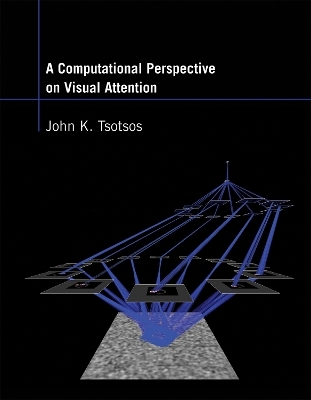
A Computational Perspective on Visual Attention
Seiten
2011
MIT Press (Verlag)
978-0-262-01541-7 (ISBN)
MIT Press (Verlag)
978-0-262-01541-7 (ISBN)
- Titel ist leider vergriffen;
keine Neuauflage - Artikel merken
The derivation, exposition, and justification of the Selective Tuning model of vision and attention.
Although William James declared in 1890, "Everyone knows what attention is," today there are many different and sometimes opposing views on the subject. This fragmented theoretical landscape may be because most of the theories and models of attention offer explanations in natural language or in a pictorial manner rather than providing a quantitative and unambiguous statement of the theory. They focus on the manifestations of attention instead of its rationale. In this book, John Tsotsos develops a formal model of visual attention with the goal of providing a theoretical explanation for why humans (and animals) must have the capacity to attend. He takes a unique approach to the theory, using the full breadth of the language of computation-rather than simply the language of mathematics-as the formal means of description. The result, the Selective Tuning model of vision and attention, explains attentive behavior in humans and provides a foundation for building computer systems that see with human-like characteristics. The overarching conclusion is that human vision is based on a general purpose processor that can be dynamically tuned to the task and the scene viewed on a moment-by-moment basis.
Tsotsos offers a comprehensive, up-to-date overview of attention theories and models and a full description of the Selective Tuning model, confining the formal elements to two chapters and two appendixes. The text is accompanied by more than 100 illustrations in black and white and color; additional color illustrations and movies are available on the book's Web site
Although William James declared in 1890, "Everyone knows what attention is," today there are many different and sometimes opposing views on the subject. This fragmented theoretical landscape may be because most of the theories and models of attention offer explanations in natural language or in a pictorial manner rather than providing a quantitative and unambiguous statement of the theory. They focus on the manifestations of attention instead of its rationale. In this book, John Tsotsos develops a formal model of visual attention with the goal of providing a theoretical explanation for why humans (and animals) must have the capacity to attend. He takes a unique approach to the theory, using the full breadth of the language of computation-rather than simply the language of mathematics-as the formal means of description. The result, the Selective Tuning model of vision and attention, explains attentive behavior in humans and provides a foundation for building computer systems that see with human-like characteristics. The overarching conclusion is that human vision is based on a general purpose processor that can be dynamically tuned to the task and the scene viewed on a moment-by-moment basis.
Tsotsos offers a comprehensive, up-to-date overview of attention theories and models and a full description of the Selective Tuning model, confining the formal elements to two chapters and two appendixes. The text is accompanied by more than 100 illustrations in black and white and color; additional color illustrations and movies are available on the book's Web site
John K. Tsotsos is Professor of Computer Science and Engineering, Distinguished Research Professor of Vision Science, Canada Research Chair in Computational Vision at York University, and a Fellow of the Royal Society of Canada (FRSC).
| Reihe/Serie | A Computational Perspective on Visual Attention |
|---|---|
| Zusatzinfo | 102 b&w illus., 2 tables, 15 color plates |
| Verlagsort | Cambridge, Mass. |
| Sprache | englisch |
| Maße | 178 x 229 mm |
| Gewicht | 703 g |
| Themenwelt | Informatik ► Grafik / Design ► Digitale Bildverarbeitung |
| Medizin / Pharmazie ► Medizinische Fachgebiete ► Neurologie | |
| ISBN-10 | 0-262-01541-2 / 0262015412 |
| ISBN-13 | 978-0-262-01541-7 / 9780262015417 |
| Zustand | Neuware |
| Haben Sie eine Frage zum Produkt? |
Mehr entdecken
aus dem Bereich
aus dem Bereich
alles zum Drucken, Scannen, Modellieren
Buch | Softcover (2024)
Markt + Technik Verlag
CHF 34,90
Methoden, Konzepte und Algorithmen in der Optotechnik, optischen …
Buch | Hardcover (2024)
Hanser (Verlag)
CHF 55,95


